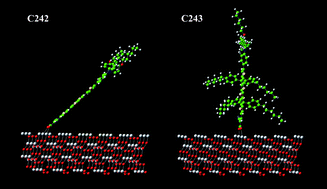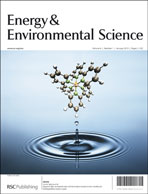The rigidification of π-conjugated linkers represents a viable strategy towards the energy-level engineering of organic push–pull photosensitizers in dye-sensitized solar cells. In this paper we deploy 4-hexylphenyl substituted cyclopenta[1,2-b:5,4-b′]dithiophene[2′,1′:4,5]thieno[2,3-d]thiophene as the π-linker of a D-π-A dye, which displays an improved molar absorption coefficient and a red-shifted absorption peak in contrast to its model dye with the 2,5-di(thiophen-2-yl)thieno[3,2-b]thiophene segment. The energy-gap reduction is concomitant with negative and positive shifts of ground-state and excited-state redox potentials, which however do not exert an adverse impact on the net charge separation yield at the titania/dye/electrolyte interface, probably due to the formation of a favored microstructured dye assembly. Furthermore, the dye load amount can be tuned by changing the bath solvent and has a significant influence on some key photovoltaic features such as the photocurrent and photovoltage, the latter of which is dissected via the joint charge extraction and photovoltage decay experiments. The charge recombination lifetime could be roughly rationalized by analyzing the damping of signals on emitted electrons from titania in the X-ray photoelectron spectroscopy measurements.

You have access to this article
 Please wait while we load your content...
Something went wrong. Try again?
Please wait while we load your content...
Something went wrong. Try again?


 Please wait while we load your content...
Please wait while we load your content...